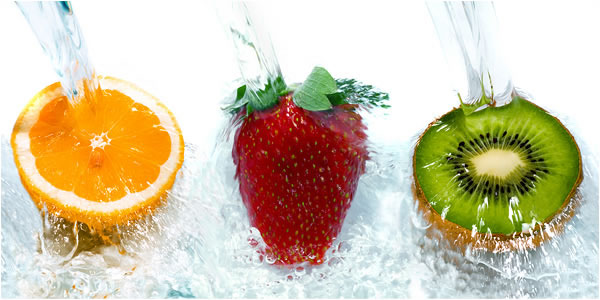
Many of us have associated the term “vitamins” with our need to have more energy. We ignore however, that vitamins are additional nutrients that got their name from the fact that they do not provide any energy to the body! This practically means that vitamins have no calories. However, prolonged lack of them can cause significant health problems (for example blood clotting, vision problems, skin, bones and neuromuscular system etc).
Vitamins are divided into soluble and liposoluble, ie those which can be dissolved in water and transferred through it, such as vitamins C and B and those that dissolve only in fat. This means that when we are short of the first type, the results are visible immediately, as water-soluble vitamins cannot be stored in the body. The effects from the lack of fat-soluble vitamins are slow since the existing vitamins are already stored in our fat cells.
Which foods are rich in vitamins?
Include these foods in your diet to ensure that you are providing your body all the essential vitamins:
- Citrus fruits, strawberries, kiwi fruit: vitamin C
- Broccoli: phytochemicals with anticancer properties, folate, vitamin C, vitamin K, iron (requires vitamin C for better absorption), fiber
- Green leafy vegetables: B vitamins, vitamin K, iron (requires vitamin C for better absorption)
- Peppers in different colors: green for vitamin C, orange, red and yellow for beta-carotene
- Tomatoes: Lycopene (antioxidant)
- Sesame: calcium, iron, fiber, magnesium, phosphorus
- Flaxseed, walnuts, almonds: omega 3 fatty acids, B vitamins, vitamin E, protein, complex carbohydrates, fiber
- Whole grains: complex carbohydrates, B vitamins (biotin), cysteine, zinc, fiber
- Legumes: protein, complex carbohydrates, fiber, B vitamins, iron (requires vitamin C for better absorption)
- Low fat milk: protein, calcium, phosphorus, riboflavin, vitamin B12, vitamin A, vitamin D (if milk is enriched)
- Olive oil: vitamin E, monounsaturated fatty acids
- Sardines, mackerel / mackerel, trout: omega 3 fatty acids, protein, vitamin D
- Green Tea: catechins (powerful antioxidant), liquid
The best food combinations
Experts are suggesting some combinations to make the absorption of nutrients by the body easier. Combinations of low grade protein foods if eaten together as a meal (ideally) or within the same day ensure the intake of high quality protein. For example:
- Beans with rice e.g. lentils with rice
- Legumes with cereals e.g. beans on toast or lentils with pasta or bread
- Dried fruit with cereals e.g. bread with peanut butter or hummus
Calcium and Iron
Calcium
It is also important to know what the factors that affect the absorption of calcium are. Our allies in this case is the lactose in milk and foods containing vitamin D, while opponents of calcium absorption are animal protein, dietary fiber, phytic acid, oxalic acid, salt, low levels of vitamin D, caffeine and alcohol.
Iron
The factors that affect the absorption of plant iron are: Iron can interact with the fructose, vitamin C and iron of animal origin.
